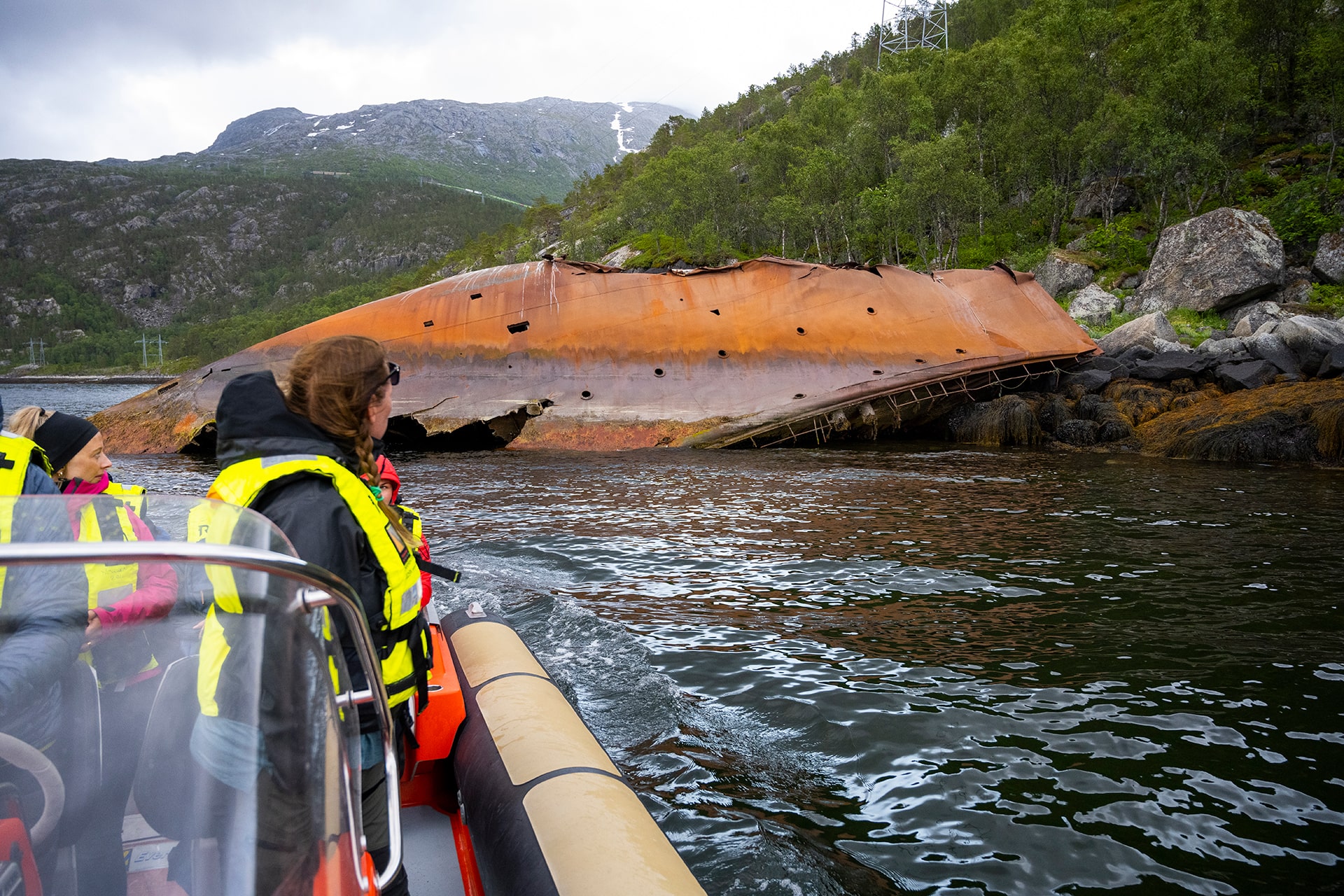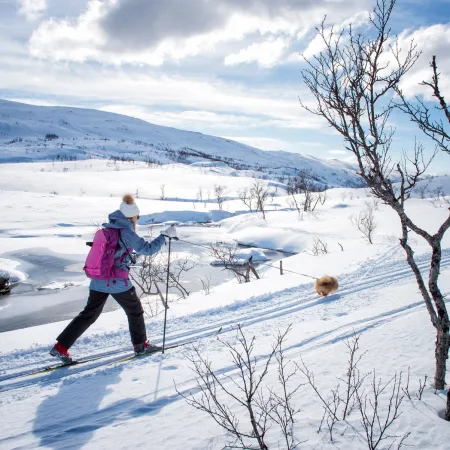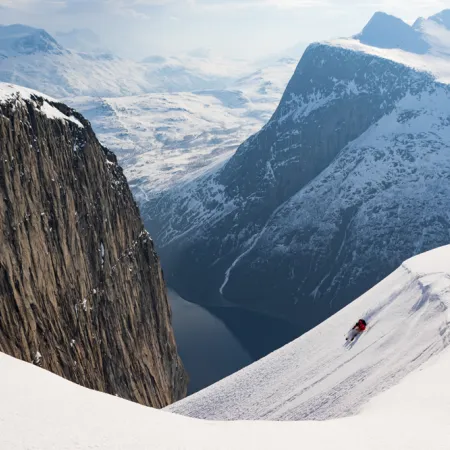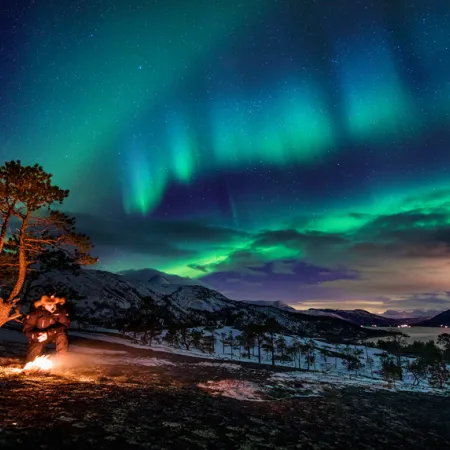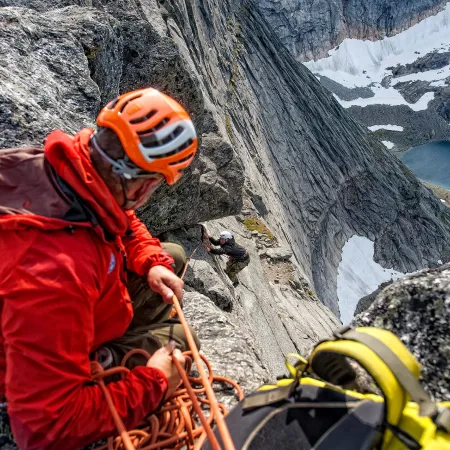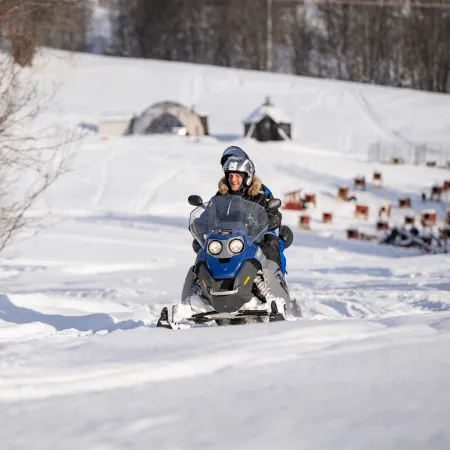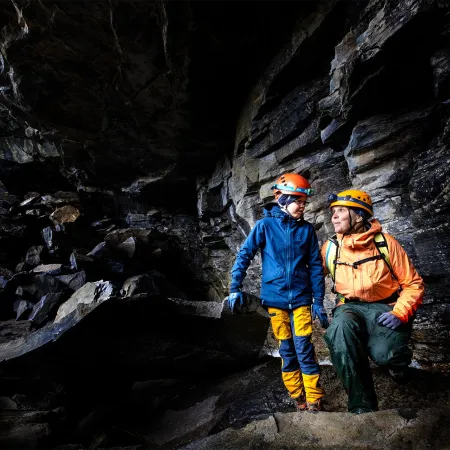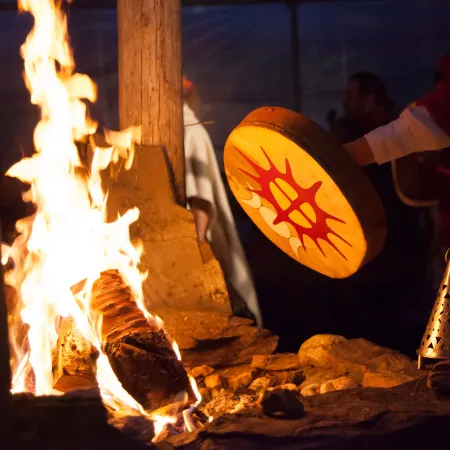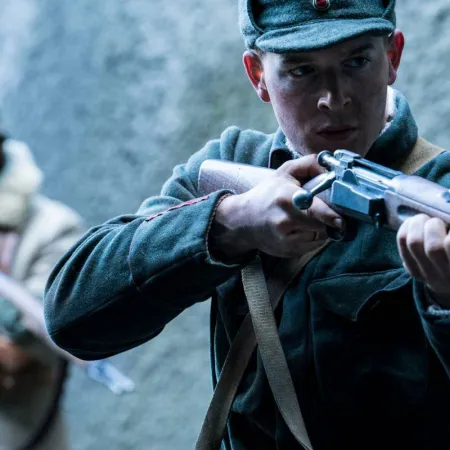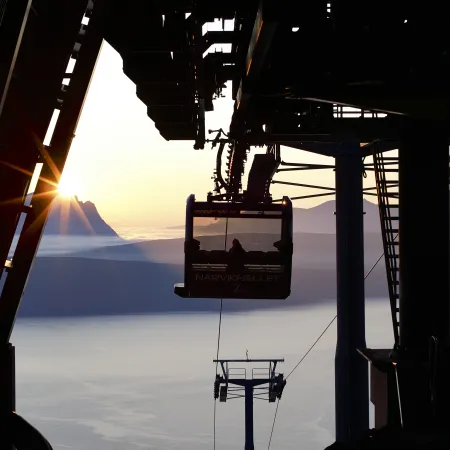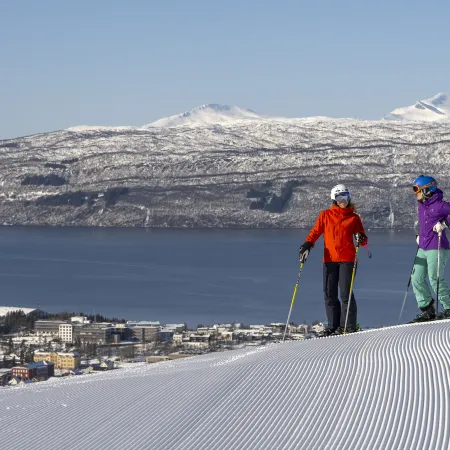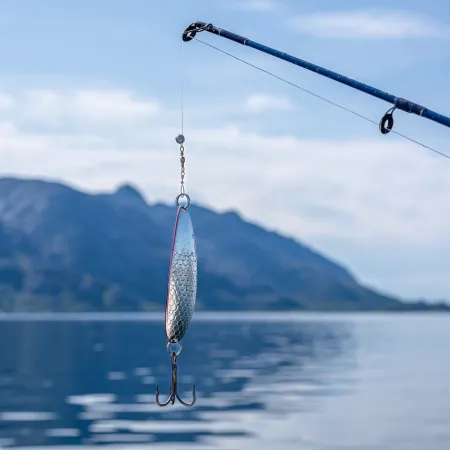The Perfect Day Trip
Hike across
Norway
The Ofot Line
A stunning train journey from fjord to mountain, unveiling a dramatic landscape.
Hike on the Navvy road
An easy ramble through a magnificent, untouched landscape of mountains, dales and waterfalls.
Scenic boat ride back
Take a boat ride from Rombaksbotn through the captivating Rombak fjord.
The Perfect Day Trip
This excursion brings together a journey on the northernmost Ofoten Railway, a hike along the historic Navvies' Road, a picturesque boat ride across the Rombaken fjord to Sildvik, and the final leg of the adventure by bus, returning to Narvik. Tie your walking shoes and get out on an adventurous journey along historic tracks and trails!
The RIB boat embarks from Rombaksbotn each Friday and Saturday until September 14th, coordinating with the Vy train schedule. Tickets are available for purchase as part of our bundled packages listed below.
1. Experience the Ofoten Line
A marvellous train journey that take you from the fjord to the mountains, with a dramatic landscape. The railway is one of Northern Norway’s hidden gems. A magical 43 kilometres long train trip from the Northern Atlantic, into the heart of Ofotfjord, and through the huge mountains on the Swedish Lapland borders.
You have the flexibility to disembark the train at two distinct stations, tailoring the total trip length according to your preference: Bjørnfjell Station (13km), Katterat Station (6.5km) and Riksgrensen Station (16.2km), all leading to Rombaksbotn.
VY departure Narvik st. 10:30 arrives at Katterat st. 11:04, Bjørnfjell st. 11:18 and Riksgrensen st. 11:25
In the 19th century, tapping into northern Sweden's vast iron ore riches was no easy feat. The terrain posed difficulties, the weather was unforgiving, and the nearest port lay hundreds of kilometers away.
The Construction
This led to the birth of the Ofoten Line, a crucial railway connecting Kiruna's iron mines to the ice-free port of Narvik. Itinerant workers, so-called "navvies" sought their fortune in what was referred to as Europe's "Klondyke", and at most over 5,000 people were involved in the construction of the track. Building the railway was a colossal feat, ascending over 500 meters in just four miles and carved into a mountainside ledge above the fjord. Completed in 1902, the 168-kilometer engineering marvel finally unlocked Kiruna's iron reserves.
Electrification & War
Initially, steam locomotives hauled iron-laden trains, managing the haul through winter's chill without a hitch. By 1923, the line switched to electric power for increased efficiency. Beyond its engineering marvels, the Ofoten Line has a rich history. It was a critical strategic route during World War II, witnessing the Battle of Narvik's fierce combat, lending a dramatic narrative to the scenic railway.
Heavy Haul
Today, this railway remains vital, transporting 10-12 iron trains daily, each carrying 68 wagons laden with 100 tons of ore—enough for 68,000 cars! No wonder LKAB must use the strongest locomotives on the market. It's shipped over 1 billion tons of iron ore in its 120-year history. And it's not just ore; 90% of groceries from Southern to Northern Norway travel this route. As you ride the Ofoten Line, you're journeying through history—from miners' dreams to wartime tales—amidst awe-inspiring Nordic landscapes.
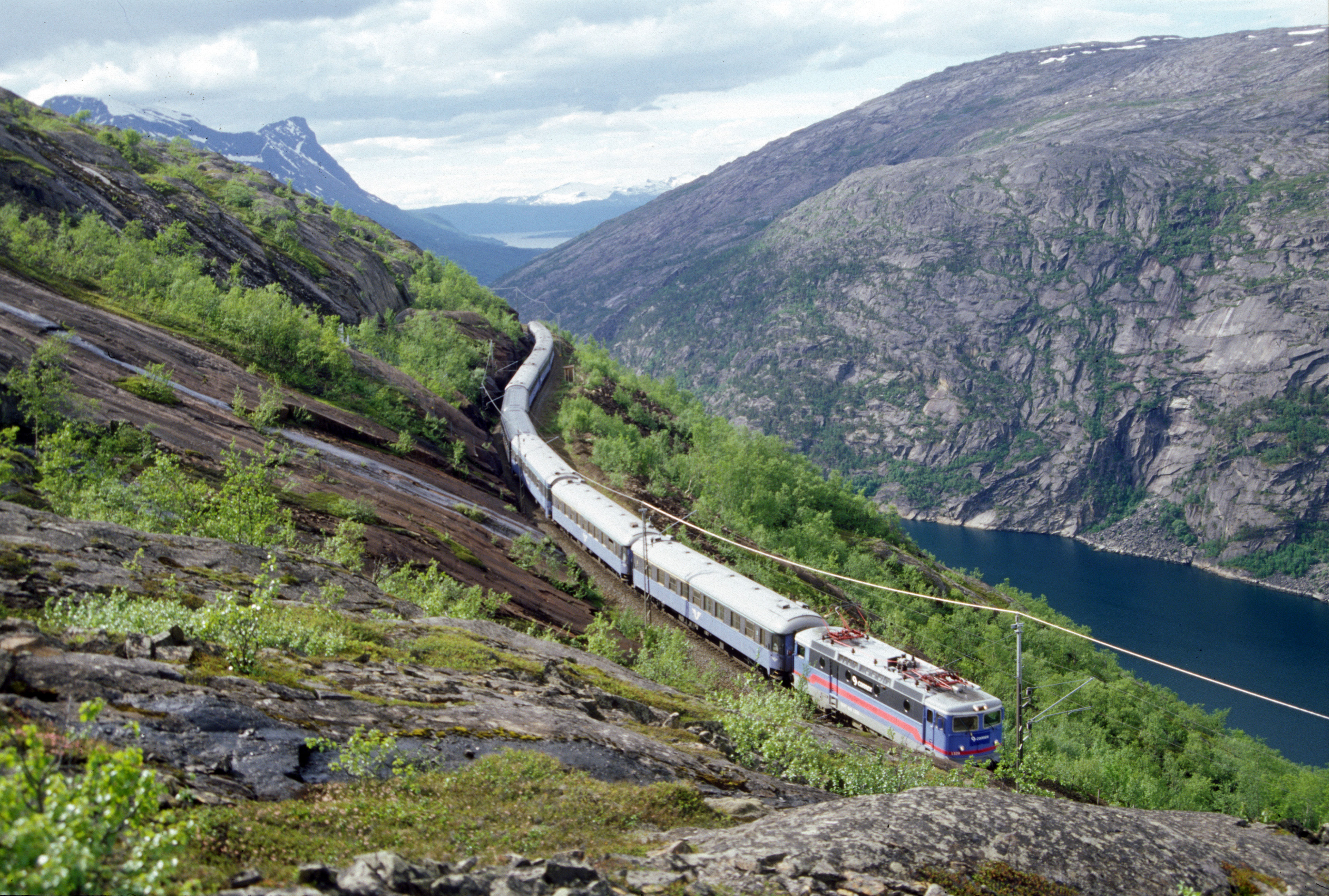
2. Hike on the Navvy Road
Embark on a hike along the Navvy Road, following the path of the navvies who constructed the Ofotbanen Railway before the 1900s. Throughout the entire route, you'll come across remnants of the navvies' presence. Keep an eye out for information boards and ancient ruins to truly immerse yourself in the historical journey.
The path is relatively well-kept, with stone paving and steps, and is manageable by all able-bodied walkers. And, as it’s downhill all the way, there is no exertion involved. There are plenty of benches and campfire areas along the path. Lush vegetation and stunning waterfalls line the route.
The trail culminates in the picturesque Rombaksbotn, once inhabited by the navvies. Though the houses have vanished, echoes of ancient history remain. The backdrop of towering 1500-meter-high mountains against the bay creates a captivating and wild landscape.
The legacy of the navvies persists in the enduring tale of the Ofoten Line's construction, a feat largely achieved through manual labor. The navvies, were itinerant laborers who played a pivotal role in shaping the railway. The unforgiving landscape and weather along the Ofoten line made it an incredibly challenging endeavor, demanding resilience from those involved. Enduring bitter cold, perpetual darkness, and relentless winter storms, these workers found solidarity through their shared hardships, fostering a culture rich with camaraderie and marked by the iconic Navvies hat. Their vibrant legacy lives on robustly to this day.
The Winter Festival
Narvik's Winter Festival annually celebrates these heroes with a vibrant ten-day event in March filled with concerts, dance, theater, and art. Attendees, young and old, don historical attire, transporting the city back to the late 19th century.
1 Locomotive Roundhouse
This historic roundhouse at Niehku used to be a hub for steam-era trains swapping between Norway and Sweden. It handled essential tasks like cleaning, and restocking coal and water.
2 Riksgränsen
Bunkers with connections to both World Wars, offering a glimpse into historical events.
3 Bjørnfjell Station
Built back in 1923 during the electrification of the Ofoten Line, this station sits at an impressive height of 517 meters above sea level, making it the highest in the area.
4 Solheimsbrakka
A significant site during WW2, serving as the headquarters for German General Eduard Dietl during the battle for Narvik.
5 Oladalen
Explore bunkers on the mountainside used as shelter for soldiers. Remember to bring a flashlight and waterproof shoes for a safe visit inside.
4 Norddalsbrua
An old Pendulum-pillar bridge constructed in 1902 and featured prominently in the film "The Battle for Narvik."
7 Viewpoint Norddalen
A fantastic spot offering views of the untamed Norddalen and passing trains along the railway.
8 Aerial tramway station
This station facilitated the transfer between large and small cable cars, providing an interesting sight for visitors.
9 Railroad crossing
Safety first! Watch out for passing trains when crossing the tracks.
10 Vokterboligen
An old worker's house available for rent, equipped with outhouse facilities.
11 Hundalen
A former administration site during the construction of the Ofoten Line, featuring houses, information signs, fire pits, and outhouse toilets.
12 Pover plant ruin site
Once a significant power station, supplying energy to the drilling machines in the longest tunnels of Northern Norway.
13 Storfossen
A picturesque spot near a waterfall with benches and a fire pit. Mind the slippery rocks for safety.
14 Bridge Søsterbekken
Enjoy a beautiful view of the Sister Streams cascading down the mountain.
15 Viewpoint Rombaksbotn
A high vantage point offering panoramic views of the surrounding area.
16 Rombaksbotn
A junction where you can explore the old main street or visit the ruins of an old farmstead. Shelters and outhouse toilets are available in the area.
17 Quay
Access boat transportation back to the floating dock in Sildvik and continue the journey to Narvik.
Join us on a 120-year time travel to the bustling construction town of the Ofoten Line. The animated video vividly depicts Rombaksbotn, where 700 industrious residents thrived during the late 19th-century construction era.
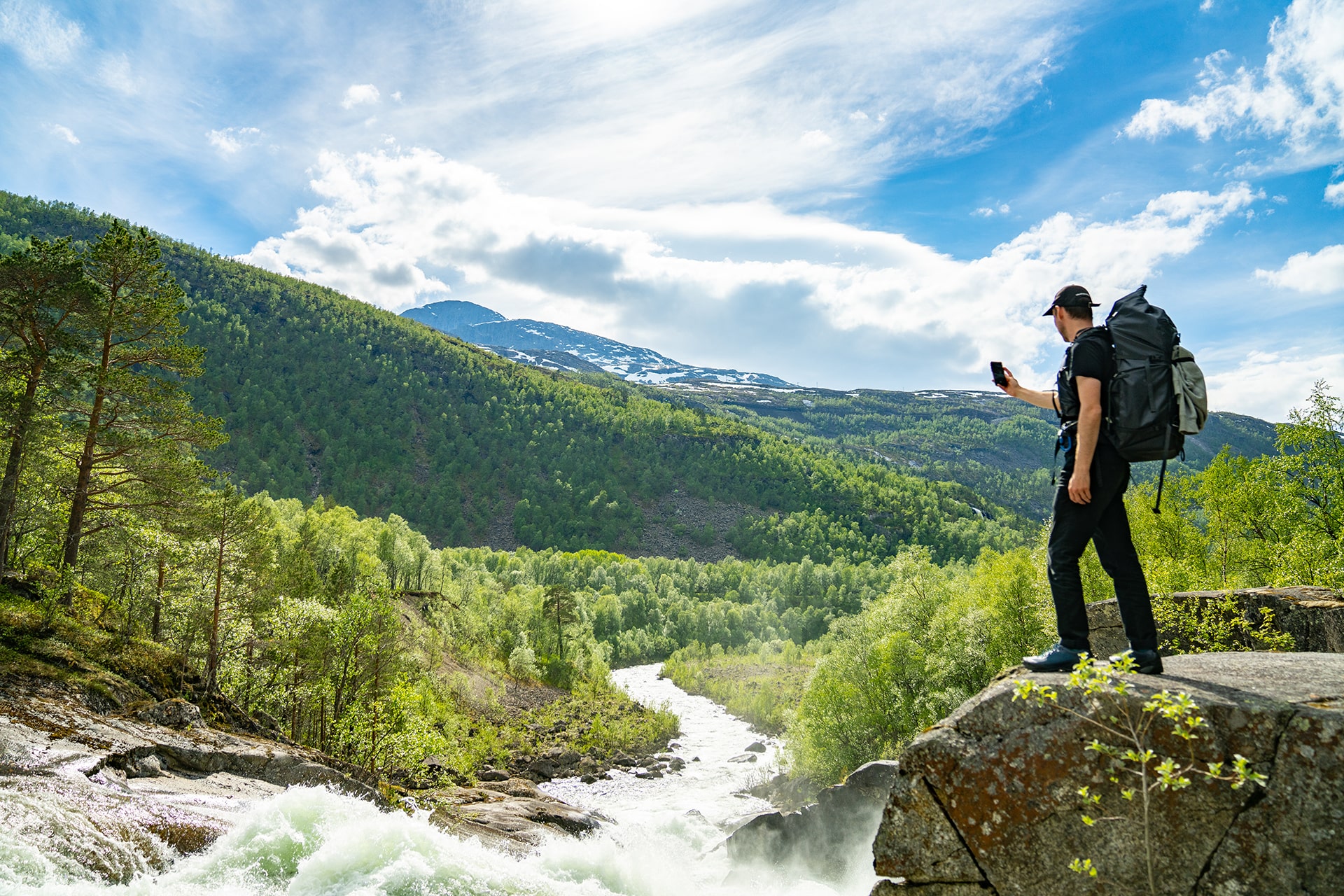
3. Scenic Boat Ride Back
Embark on a boat ride from Rombaksbotn to Sildvik, passing through the scenic Rombak fjord. You'll also see the WW2 shipwreck Georg Thiele, with the possibility of a stop briefly for photos. This boat journey, about 10-15 minutes long, showcases steep mountains, waterfalls, and the picturesque Rombaksfjord. At Sildvik, switch to a bus for the final leg of the trip, taking around 15-20 minutes to reach Narvik Train Station, arriving around 18:30.
Departure Rombaksbotn stone quay at 18.00
The German destroyer Z2 Georg Thiele was one of four Type 1934-class destroyers built for the German Navy (Kriegsmarine) during the mid-1930s. She was named after Georg Thiele, a Korvettenkapitän (Corvette Captain) who commanded the Seventh Half Flotilla of torpedo boats. Completed in 1937, two years before the start of World War II, the ship spent most of her time training although she did participate in the occupation of Memel in early 1939.
At the beginning of World War II, the ship was initially deployed to blockade the Polish coast, but she was quickly transferred to the German Bight to lay minefields in German waters. During the early stages of the Norwegian Campaign, in April 1940, Z2 Georg Thiele fought in both naval Battles of Narvik, on 10 and 13 April, and had to be beached to allow her crew to abandon ship safely after she had been severely damaged by British fire. The ship, having broken up, is now a popular diving site.
From Wikipedia, the free encyclopedia
